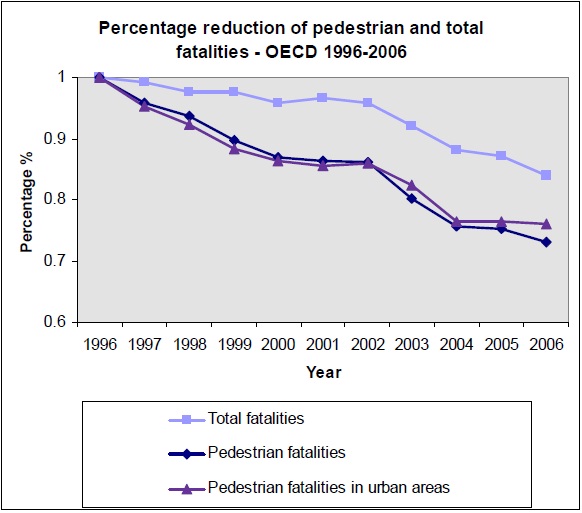
The objective of this research is the creation of an overall picture on the basic figures and trends of pedestrian fatalities in urban areas in the OECD countries. Existing pedestrian traffic fatality data are presented and interpreted in terms of key factors of pedestrian safety. Moreover, the analysis aims to identify the main questions of pedestrian safety data needs, availability and quality in the OECD countries. In particular, pedestrian fatality data from 26 OECD countries was collected and analysed. The variables considered include person age and gender, month, area type (inside / outside urban area), road lighting conditions (daytime / night), year and month etc. The results show that, although pedestrian fatalities in the OECD countries present a constantly decreasing trend during the last years, the number and proportion of pedestrian fatalities in urban road accidents in several OECD countries and as a whole is still unacceptable, and illustrates the need for even greater efforts with respect to pedestrian safety. They also suggest that most pedestrian fatalities occur inside urban areas, during the winter and during nighttime, and they confirm that the children and the elderly are still at increased fatality risk as pedestrians. Such results can be useful at macroscopic level for monitoring overall trends and figures, as well as for setting priorities for policy making. Within this framework, a number of issues are discussed, which need to be kept in mind when analyzing international pedestrian safety data of OECD countries, namely the lack of common international definitions of pedestrians’ accident and injuries, the pedestrians’ injuries under-reporting and the lack of pedestrians’ mobility / exposure data. These issues concern the safety data of all road users, but are even more critical for pedestrians. Finally, while international analyses allow each country to learn from others, the differences in culture, traffic laws, urban form and walking conditions mean that each country also needs to analyze its own situation in more detail.
| ID | pc111 |
| Presentation | |
| Full Text | |
| Tags | accident analysis, international comparisons, pedestrians |













